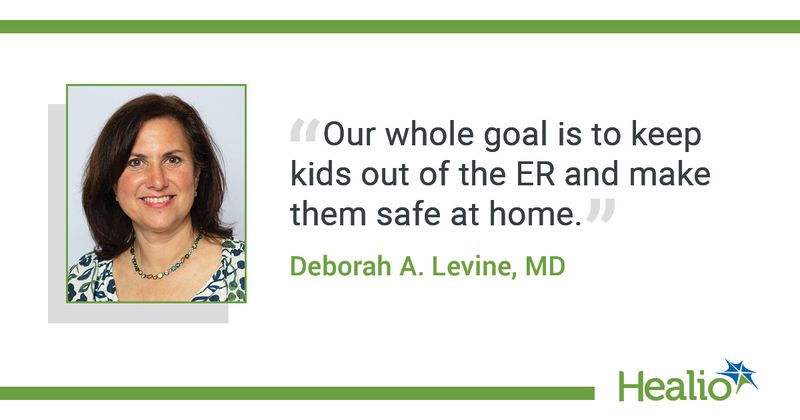Study: Pediatric mental health emergencies increased with each COVID-19 wave in NYC
Key takeaways:
- Young women accounted for over half of the mental health emergencies in the study.
- One researcher suggested the pandemic exacerbated pediatric mental health problems.
Pediatric mental health emergencies increased with each COVID-19 wave in New York City, a study in Pediatrics found.
The investigation was prompted by the authors’ experiences working in medical centers in the city at the height of the COVID-19 pandemic.

“We were still seeing a pretty significant amount of pediatric mental health emergencies, and we knew that this was a problem even preceding the pandemic,” Deborah A. Levine, MD, associate professor of clinical emergency medicine and clinical pediatrics at Weill Cornell Medicine’s Komansky Children's Hospital, told Healio. “A higher percentage of our patients were for pediatric mental health emergencies, so that is what prompted us to look at it not just at our institution but to look at it across the city.”
Levine and colleagues examined data from the INSIGHT Clinical Research Network, a database encompassing five major medical centers across the five boroughs, which Levine said included “a tremendous proportion” of hospital visits in New York City.
“New York City was so unique, being the first big epicenter [of the virus in the U.S.], being such a densely populated urban environment full of such diverse patient populations,” Levine said. “We wanted to see if New York City had its own issues that we could address locally and see whether or not it generalized to other patient populations across the country and the world.”
In their cross-sectional time series analysis, the authors specifically examined children aged 5 to 17 years, beginning in 2016, and followed them through five COVID-19 waves based on dominant variants through June 2022:
- the first wave, running from March 1 to July 31, 2020;
- the second wave, running from Aug. 1, 2020, to June 18, 2021;
- the third wave, running from June 19 to Nov. 30, 2021;
- the fourth wave, running from Dec. 1, 2021, to Mar. 5, 2022; and
- the fifth wave, running from March 6 to June 12, 2022.
They also examined demographics based on age, race, ethnicity and child opportunity index based on zip codes, which gave the authors “an idea about socioeconomics,” Levine added. The authors also used the New York State Stringency Index to find any relationship between pediatric mental health emergencies and the restrictions being imposed across the state.
“It was interesting to actually see the progression of the pediatric mental health emergencies over that time period,” Levine said. “We also wanted to see, was this change in prevalence related to the number of COVID cases, and was it related to state-level restrictions?”
Out of 686,500 visits, 4% were mental health visits to EDs. In this grouping, which totaled 27,168 visits, 46% were male, 37% were Hispanic, 16% were Black and 41% were in a zip code with a low child opportunity index score. Although they found no association between increased visits and COVID-19 prevalence or Stringency Index ratings, visits did increase in each wave among females, those of Asian descent and those with high child opportunity index rates.
Levine said the pandemic exacerbated existing issues.
“At the end of those five waves, it was still higher than what we imagined it would be if there was no pandemic,” Levine said.
The authors wrote that “enhanced pediatric mental health resources are essential” to address their findings.
“This is a wakeup call that we need to identify root causes and more potential targets for interventions to help like mitigate this crisis,” Levine said. “Our whole goal is to keep kids out of the ER and make them safe at home.”
